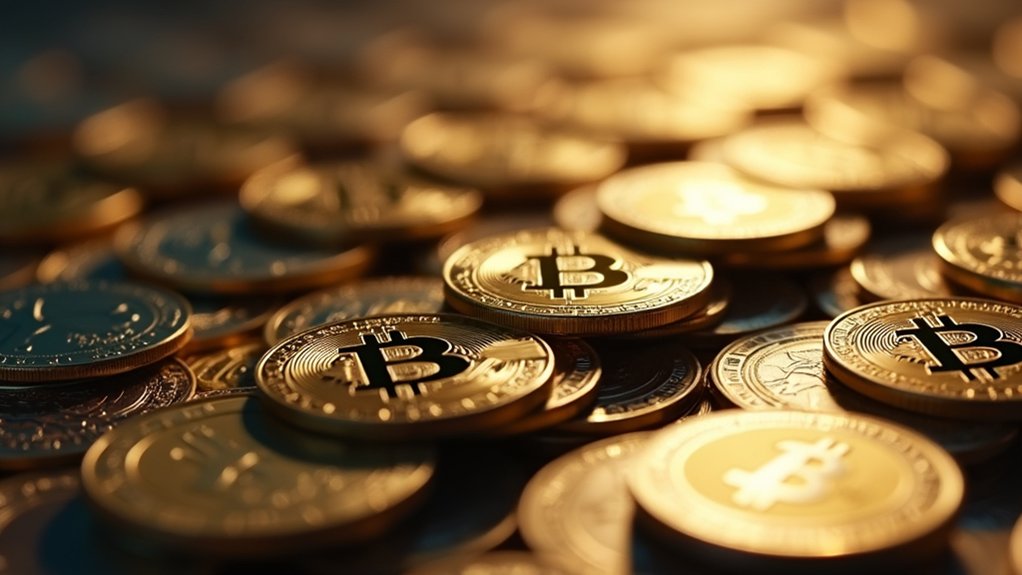Oracle services function as blockchain’s essential data messengers, bridging the paradoxical gap between trustless smart contracts and their inconvenient need for real-world information. These intermediaries authenticate and relay external data—market prices, weather conditions, sports outcomes—enabling decentralized applications to escape their digital isolation. While centralized oracles offer simplicity, decentralized networks like Chainlink provide consensus-driven reliability, though both reintroduce the trust dependencies that blockchain supposedly eliminates. Understanding their operational mechanics reveals the intricate infrastructure powering modern DeFi.

The blockchain ecosystem‘s greatest paradox may well be that its most revolutionary feature—the ability to execute code without human intervention—depends entirely on humans to tell it what’s happening in the real world.
Oracle services resolve this contradiction by functioning as sophisticated data intermediaries, bridging the gap between blockchain networks and external information systems that smart contracts desperately need but cannot directly access.
These digital messengers don’t generate data themselves (a common misconception that persists with surprising tenacity) but rather verify and relay information from outside sources to on-chain applications.
The process follows a deceptively simple workflow: smart contracts request external data, oracles query trusted sources, authenticate the information, and transmit validated results back to the blockchain.
Without this mechanism, smart contracts would remain prisoners of their own ecosystems, capable of brilliant self-referential logic but blind to market prices, weather patterns, or any real-world events that make decentralized applications genuinely useful.
The architecture varies considerably in sophistication and risk tolerance.
Centralized oracles offer simplicity through single-source data feeds but introduce the very trust dependencies that blockchain technology ostensibly eliminates—an irony not lost on purists.
Decentralized oracle networks attempt to solve this through consensus mechanisms across multiple data sources, though they inevitably increase complexity and potential points of failure.
Practical applications span the predictable territory of decentralized finance, where price feeds determine liquidations and trading parameters, extending into insurance contracts that verify claim conditions and prediction markets requiring authoritative event resolution.
The gaming sector has embraced oracles with particular enthusiasm, integrating real-world outcomes into virtual environments with results that range from innovative to absurd. Some oracle implementations can also send information back to external systems, creating bidirectional communication channels between blockchain networks and off-chain infrastructure.
Oracle data sources themselves vary dramatically in nature, with software oracles drawing from digital sources like websites and databases while hardware oracles relay information from physical devices and sensors.
The challenges remain formidable: oracle manipulation can trigger cascading smart contract failures, third-party dependencies reintroduce centralization risks, and data verification demands substantial computational resources. Sophisticated protocols rely on oracles to maintain stablecoin tokens like DAI, where smart contracts use external price data to adjust supply mechanisms and preserve dollar parity.
Market leaders like Chainlink, Band Protocol, and API3 continue developing solutions that emphasize aggregation, validation, and tamper-proofing, though the fundamental tension between trustless execution and trusted data sources persists as blockchain’s most elegantly unsolvable problem.
Frequently Asked Questions
How Much Do Oracle Services Typically Cost for Cryptocurrency Projects?
Oracle service costs vary dramatically based on data complexity and update frequency, ranging from modest per-query fees to substantial subscription models.
While simple price feeds might cost mere dollars monthly, sophisticated financial data streams (particularly those requiring high-frequency updates) can command thousands.
Network fees add another layer of expense, though subscription-based pricing helps projects manage predictable costs—assuming, naturally, that predictability exists in this notoriously volatile ecosystem.
Can Oracle Services Be Hacked or Manipulated by Malicious Actors?
Oracle services face substantial manipulation risks, with attackers exploiting centralized data feeds through API tampering, flash loan attacks, and Sybil flooding techniques.
Historical breaches have generated over $1 billion in losses—a rather sobering evidence to vulnerability.
While decentralized oracle networks and consensus mechanisms offer improved security (alongside reputation systems that punish misbehavior), the bridge between blockchain and external data remains an attractive target for sophisticated actors seeking profitable exploits.
Which Cryptocurrencies Rely Most Heavily on Oracle Services for Functionality?
Chainlink dominates oracle dependency, with virtually every major DeFi protocol relying on its price feeds for basic functionality.
Synthetix represents perhaps the most extreme case—synthetic assets become worthless without accurate oracle data.
UMA’s entire synthetic derivative model collapses without reliable external information, while Aave and Compound require constant price updates to prevent liquidation chaos.
These platforms have basically outsourced their operational backbone to third-party data providers.
What Happens When an Oracle Service Goes Offline or Stops Working?
When oracle services go offline, smart contracts effectively become blind—unable to access external data required for execution.
This creates a domino effect: contract execution halts, financial transactions freeze, and users face potential economic losses.
The irony? Systems designed for decentralization suddenly reveal their dependence on centralized data feeds.
Recovery requires redundant oracles, decentralized networks, or cached data—assuming developers had the foresight to implement such failsafes beforehand.
How Do Developers Choose Between Different Oracle Service Providers?
Developers evaluate oracle providers through a methodical assessment of data accuracy, decentralization levels, and security protocols—though one might wonder why such rigor wasn’t applied to the underlying smart contracts themselves.
They scrutinize reputation, integration complexity, and feature diversity while weighing economic factors like gas fees and pricing models.
Community adoption and partnership ecosystems ultimately influence decisions, because apparently nothing validates technical excellence quite like popularity contests in decentralized finance.









